calsfoundation@cals.org
Molluscs
aka: Mollusks
The phylum Mollusca is a major invertebrate group known commonly as “molluscs” (sometimes spelled “mollusks”), which includes about 85,000 living species (although this number varies), with another 60,000 to 100,000 additional fossil species. This phylum is ranked second only to the Phylum Arthropoda in number of living species. Included within the diverse phylum are snails, slugs, cowries, squids, clams, mussels, limpets, oysters, scallops, octopi, cuttlefish, and a myriad of additional groups such as the little-known chitons, monoplacophorans, and tusk shells. Malacology is the scientific study of molluscs, and a specialist who studies them is known as a malacologist. Two classes of molluscs inhabit Arkansas: the Gastropoda and the Bivalvia. Approximately eighty-five species of bivalves are known from the state, while about forty-two species of gastropods have been documented. There are also several endemic snails in the state and one endemic mussel. Arkansas had a booming button blank industry in the first part of the twentieth century, with a seemingly inexhaustible supply of freshwater mussels from Mississippi River Valley tributaries.
Molluscs range in size from microscopic solenogasters to whelks attaining a length of 70 cm (22.6 in.) to giant clams (Cardiidae) over 1 m (3.3 ft.) in length to giant squids. The giant squid (Architeuthis dux) is the second-largest known invertebrate, with a maximum size (from the posterior fins to the tip of the two long tentacles) of 13 m (43 ft.) for females and 10 m (33 ft.) for males. One of these rarely observed organisms was photographed in the Gulf of Mexico in 2019. However, the colossal squid or Antarctic squid or giant cranch squid (Mesonychoteuthis hamiltoni), the only known member of the genus, is believed to be the largest squid species in terms of mass. Current estimates put its maximum length at 12 to 14 m (39–46 ft.) long and weight possibly up to 750 kg (1,650 lbs.). This makes it largest known invertebrate. The largest octopus (Enteroctopus dofleini) attains an arm length of 3 to 5 m (9.8 ft to 16.4 ft.) and a weight of over 40 kg (88.2 lbs.).
Molluscs have a fossil record dating back nearly 550 million years and thus are regularly used to study the evolution of life. Bivalves, cephalopods, and gastropods are believed to have appeared first in the Cambrian Period (541 to 485 million years ago [mya]); however, there are arguments among scientists concerning their actual emergence. The earliest indisputable molluscs are helcionellid molluscs that date from Late Ediacaran (Vendian) rocks. In the Early Cambrian, the Coeloscleritophora were also present as well as more familiar groups, including bivalves, gastropods, monoplacophorans, and rostroconchs (extinct pseudobivalved molluscs), whereas cephalopods are first found in the Middle Cambrian (513 to 501 mya), polyplacophorans in the Late Cambrian (497 to 485 mya), and the Scaphopoda in the Middle Ordovician (470 to 459 mya). Ammonites were an extinct group of molluscs in the Class Cephalopoda and Subclass Ammonoidea. The earliest ammonites appeared during the Devonian (about 409 mya), and the last surviving lineages went extinct at the close of the Cretaceous–Paleogene (K-Pg) extinction event (66 mya).
Taxonomically, living members of the Phylum Mollusca are usually divided into eight diverse classes, including Caudofoveata (deep sea molluscs), Aplacophora (=Solenogastres) (shell-less molluscs), Monoplacophora (Neopilina), Polyplacophora (chitons), Gastropoda (snails, limpets, and slugs), Bivalvia (formerly Pelecypoda—the bivalves, the oysters, clams, mussels, and scallops), Cephalopoda (octopus, squid, cuttlefish), and Scaphopoda (tusk shells). It is estimated that gastropods make up the vast majority (80 percent) of all molluscs, and Bivalvia comprises about 14 percent of the total, while the other classes encompass less than 2 percent of the number of extant molluscs.
The taxonomic history of molluscans is very long and convoluted and still not completely settled in the twenty-first-century. For example, there is some uncertainty regarding the phylogenetic position of the solenogasters. It is considered to be the most basal molluscan group traditionally and the sister group to the Caudofoveata, but alternatives to both of these statements have been proposed on various lines of evidence. Indeed, some molecular datasets plot Solenogastres as outgroup to the Mollusca.
The Mollusca is one of the most morphologically diverse phyla in the animal kingdom. Despite their amazing diversity, all molluscs share some unique characteristics that describe their body plan. Three primary characteristics are typically used to define the modern Mollusca, including (1) a mantle with a cavity for breathing and excretion; (2) presence of a radula (except in bivalves); and (3) the structure of the nervous system. The body possesses a head, a foot, and a centrally located visceral mass. The visceral mass is covered by the thick epidermal sheet of skin called the mantle (pallium), which secretes the shell, or sclerites or plates (as in chitin), depending on the species. Emerging ventrally is the muscular foot. In some groups, like slugs (Gastropoda) and octopuses (Cephalopoda), the mantle is secondarily lost, while in other groups, it is used for other life processes, such as respiration. Typically, at least in the more primitive members of each group, there are one or more pairs of gills (ctenidia) that lie in a posterior cavity (the pallial cavity) or in a posterolateral groove surrounding the foot. The pallial cavity typically contains a pair of sensory osphradia (for smelling) and is the space into which the kidneys, gonads, and anus open.
Molluscs are bilaterally symmetrical coelomate animals, although the coelom is reduced and exists only as a small vestige and represented by parts of the kidneys (nephridia) to get rid of waste products; gonads; and pericardium, which is the main body cavity that surrounds the heart. The main coelom is a hemocoel made up of several sinuses of an open circulatory system, except in cephalopods, which have a largely closed system. A generalized mollusc ancestor possessed two pairs of nerve cords (three in bivalves), a brain that encircled the esophagus, and eyes that had sensors to detect vibration, touch, and chemicals.
The diverse nature of this phylum is revealed in the many different methods of reproduction. The ancestors had a simple reproductive system of external fertilization; however, complex exceptions did occur. There are usually separate sexes (males and females) with the exception of some snails that are hermaphroditic. Some molluscs, such as oysters, are capable of changing their sex many times throughout their life. In aquatic environments, the most common form of fertilization is external, whereas fertilization is internal in terrestrial snails. All molluscs produce eggs from which a trochophore larva emerges, and some possess a more complex free-swimming veliger larva, or miniature adult. Freshwater bivalves lack these stages and some go through a larval glochidium stage, which attaches to a fish or other objects.
In terms of feeding, truly herbivorous grazers are relatively rare among molluscs and are limited to some polyplacophorans and a few gastropods. Most chaetodermomorph aplacophorans, monoplacophorans, and scaphopods feed on bacteria and/or protists, while neomeniomorph aplacophorans browse on cnidarians. Cephalopods are primarily active predators, as well as some gastropods, whereas a few chitons and septibranch bivalves capture microcrustaceans. Most bivalves are either suspension or deposit feeders that indiscriminately take in particles but then elaborately sort them based on size and weight, typically assimilating bacteria, protists, and diatoms.
As part of almost every ecosystem in the world, molluscs are extremely important members of many ecological communities. While most live in the oceans extending from the intertidal to the deepest oceans with hot hydrothermal vents to cold seeps, several major gastropod clades live predominantly in freshwater or terrestrial habitats. They are quite diverse in the tropics as well as temperate regions. In terrestrial communities, gastropods are found in high diversities and abundance. Marine molluscs occur on a large variety of substrates including coral reefs, mud flats, rocky shores, and sandy beaches. Gastropods and chitons are characteristic of these harder substrates, while bivalves are commonly associated with softer substrates where they burrow into sediment. However, there are many exceptions, such as the largest living bivalve, the endangered giant clam (Tridacna gigas), which lives on coral reefs, and many bivalves (mussels and oysters) attach themselves to hard substrates.
Scientists have studied molluscs for a long time and for a variety of reasons, and the behavior of molluscs is one of the most interesting among the Kingdom Animalia. Molluscs include the smartest invertebrate alive today, the octopus. Cephalopods such as the octopus, cuttlefish, and squid are among the most neurologically advanced invertebrates on Earth. They have large neurons, which are easier to study compared to those of many other invertebrates. In addition, they can solve complex problems and escape from nearly any enclosure. For example, cephalopods are short-term learners and long-term learners in exploration, imprinting, and play whose problem-solving strategies include combinations of learning and tactics.
The interaction between humans and molluscs has existed dating back to prehistory, as molluscs have been a food source for people for eons. Mussels, clams, and oysters were readily eaten by ancient peoples, as archaeological discoveries confirm. Molluscs are the source of such goods as pearls; cultured pearls; mother-of-pearl; Royal or Tyrian purple dye used in ancient Greece and Rome; and even Biblical blue dye, in addition to functioning as money in certain pre-industrial societies. On the Pacific coast of California, Native Americans consumed large quantities of abalone (Haliotis) and, especially, owl limpets (Lottia gigantea). Various tribes also used mussels (and their pearls) for industry, religious purposes, and ceremonial burials as well as using their shells as their base in pottery making. (The negative impact of Native Americans on these molluscan communities pales, however, in comparison to the overharvesting of some molluscan taxa by the United States in the twentieth century.) Some members once numbered in the millions but now hover on the verge of extinction. For example, fewer than 100 white abalone (H. sorenseni), remain after several million individuals were captured and sold as meat in the 1970s; as such, it is now considered an endangered species. Besides having delicious soft parts to eat, molluscs often also have desirable hard parts. The shells of some molluscs are considered quite beautiful and valuable. Even in modern societies, mollusc shells are used as tools, containers, musical devices, religious symbols, ornaments, and art objects.
One important industry that boomed for years was the trade in freshwater mussel shells in the making of buttons. To supply this industry, the lifestyle of the clammer emerged, and an itinerant flotilla of shanty boats worked the mussel beds. From all parts of the United States, huge shipments of buttons were exported across the Atlantic to Europe; in 1904, the number of buttons produced from freshwater mussel shells was estimated at 11.4 million, but this number rose to 21.7 million ten years later, and by 1916, it peaked at 40 million. Only when an artificial propagation program for mussels was instigated was there a slight halt in collecting freshwater mussels for this purpose. New agricultural practices added silt to the rivers and sewage from the nation’s major new cities, polluting the water and making the rivers unsuitable for juvenile mussels. The U.S. Army Corps of Engineers planned dams on the Upper Mississippi River, effectively stopping host fish from facilitating new mussel beds. The last shell button plants closed in the 1960s but not before causing irreparable harm to these molluscs.
In some northeastern Arkansas rivers, mussels occurred that contained blue, gold, rose, and green pearls. In 1888, in the White River, over a dozen pink pearls were taken from mussels, leading to the Arkansas Pearl Rush. However, by 1905, the Pearl Rush had wound down after many mussels were killed simply in search of pearls, leaving the meat to rot. Mussels were later harvested in the state as part of the emerging button blank industry.
Certain molluscs can be very dangerous to humans; the bite of the greater blue-ringed octopus (Hapalochlaena lunulata) and other highly venomous species can inject the neurotoxin tetrodotoxin, which may be fatal, as well as that of the giant Pacific octopus (Enteroctopus dofleini), which causes inflammation for up to a month if someone is bitten. Stings of large tropical cone shells (Conus spp.) can also be debilitating. The venoms contain many different toxins that vary in their effects, with some being extremely toxic. The sting of small cones is similar to a bee sting, but the sting of a few of the larger species of tropical cone snails can be serious, occasionally even fatal, to humans. On the other hand, conovenoms from these cone shells have been used in neurological research.
Certain aquatic snails of the genera Bulinus, Biomphalaria, and Oncomelania serve as intermediate hosts for such human diseases as schistosomiasis (caused by trematodes, Schistosoma spp.), which affects more than 200 million people worldwide. The introduction of some snail species into new environments has wreaked havoc to some ecosystems. Molluscs can also be nuisances, such as the common garden snail (Cornu aspersum), and molluscs make up a major component of fouling communities both on docks and on the hulls of ships. The invasive species the Asiatic clam (Corbicula fluminea) was first introduced to the West Coast of the United States in the late 1800s. It has since populated streams across the country (including Arkansas), where it competes with freshwater mussels for habitat and food resources. Another exotic species, the zebra mussel (Dreissena polymorpha), first observed in North America in 1988, is also a threat to some of native mussels. In addition, glochidia from mussels can be serious pests of freshwater fishes.
In Arkansas, only two classes of molluscs inhabit the state: the Gastropoda and the Bivalvia. Approximately eighty-five species of bivalves are known from the state, while about forty-two species of gastropods have been documented. More importantly, there are several endemic snails in Arkansas, including the Ouachita pebblesnail (Somatogyrus amnicoloides), thicklipped pebblesnail (S. crassilabris), and channeled pebblesnail (S. wheeleri); however, the former and latter species may be extinct. Other endemic snails include the Foushee cavesnail (Amnicola cora); the Straite supercoil (Paravitrea aulacogyra); the white lipstooth (Daedalochila peregrine); the Calico Rock oval (Patera clenchi); the Mount Magazine shagreen (Inflectarius magazinensis); the Buffalo River liptooth (Daedalochila bisontes); the Arkansas wedge (Xolotrema occidentale); and the Ozark pyrg (Marstonia ozarkensis). In Arkansas, there is a single endemic mussel species, the federally endangered speckled pocketbook (Lampsilis streckeri). Most of the work done on mussels in the state has been conducted by John L. Harris in collaboration with his colleagues and students from Arkansas State University in Jonesboro (Craighead County). In 2007, Harris received the Freshwater Mollusk Conservation Society William J. Clench Memorial Award for “singular accomplishments and long-term contributions that have advanced the natural history and understanding of freshwater mollusks.”
For additional information:
Allen, Robert T. “Additions to the Known Endemic Flora and Fauna of Arkansas.” Proceedings of the Arkansas Academy of Science 42 (1988): 18–21. Online at http://scholarworks.uark.edu/jaas/vol42/iss1/8/ (accessed September 22, 2021).
Brusca, Richard C., W. Moore, and S. M. Shuster. Invertebrates. 3rd ed. Sunderland, MA: Sinauer Associates, 2016.
Christian, Alan D., C. L. Davidson, William R. Posey II, P. J. Rust, Jerry L. Farris, John L. Harris, and George L. Harp. “Growth Curves of Four Species of Commercially Valuable Freshwater Mussels (Bivalvia: Unionidae) in Arkansas.” Journal of the Arkansas Academy of Science 54 (2000): 41‒50. Online at https://scholarworks.uark.edu/cgi/viewcontent.cgi?article=1714&context=jaas (accessed September 22, 2021).
Christian, Alan D., and John L. Harris. “An Introduction to Directions in Freshwater Mollusk Conservation: Molecules to Ecosystems.” Journal of the North American Benthological Society 27 (2008): 345‒348.
Christian, Alan D., John L. Harris, William R. Posey, J. F. Hockmuth, and George L. Harp. “Freshwater Mussel (Bivalvia: Unionidae) Assemblages of the Lower Cache River, AR.” Southeastern Naturalist 4 (2005): 487‒512.
Christian, Alan D., Sean T. McCanty, Sujata Poudel, Steve W.A. Chordas, and John L. Harris. “Inventory and Assemblage Classification of the Freshwater Mussels (Mollusca: Unionidae) of the Strawberry River, Arkansas, USA, with Implications for Conservation Planning.” Diversity 13, no. 2 (2021). https://doi.org/10.3390/d13020086 (accessed August 17, 2022).
Coles, Brian F., and Gerald E. Walsh. “Revised List of Arkansas Terrestrial Mollusks with Notes on the Geographic Distribution of Species.” Journal of the Arkansas Academy of Science 53 (1999): 32‒37. Online at https://scholarworks.uark.edu/cgi/viewcontent.cgi?article=1745&context=jaas (accessed September 22, 2021).
Davidson, Chris L., George L. Harp, and John L. Harris. “A Survey of Mollusca (Bivalvia: Unionacea) Inhabiting Myatt Creek, Fulton County, Arkansas.” Journal of the Arkansas Academy of Science 51 (1997): 193‒196. Online at https://scholarworks.uark.edu/cgi/viewcontent.cgi?article=1827&context=jaas (accessed September 22, 2021).
Fiedor, Taylor Michelle. “Montaine Molluscs: Factors Affecting Snails and Their Trematodes throughout the Mountain Regions of Arkansas.” MA thesis, Arkansas State University, 2024.
Gordon, Mark E. “Recent Mollusks of Arkansas with Annotations to Systematics and Zoogeography.” Proceedings of the Arkansas Academy of Science 34 (1980): 58‒62. Online at https://scholarworks.uark.edu/cgi/viewcontent.cgi?article=2652&context=jaas (accessed September 22, 2021).
Harris, John L., and Mark E. Gordon. Arkansas Mussels. Little Rock: Arkansas Game and Fish Commission, 1990.
———. “Distribution and Status of Rare and Endangered Mussels (Mollusca: Margaritiferidae, Unionidae) in Arkansas.” Proceedings of the Arkansas Academy of Science 41 (1987): 49‒56. Online at https://scholarworks.uark.edu/cgi/viewcontent.cgi?article=2362&context=jaas (accessed September 22, 2021).
Harris, John. L., William R. Posey II, Chris L. Davidson, Jerry L. Farris, S. Rogers Oetker, J. N. Stoeckel, Betty G. Crump, M. Scott Barnett, H. C. Martin, M. W. Matthews, J. H. Seagraves, N. J. Wentz, R. Winterringer, C. Osborne, and Alan D. Christian. “Unionoida (Mollusca: Margaritiferidae, Unionidae) in Arkansas, Third Status Review.” Journal of the Arkansas Academy of Science 63 (2009): 50‒86. Online at https://scholarworks.uark.edu/cgi/viewcontent.cgi?article=1405&context=jaas (accessed September 22, 2021).
Harris, John L., Peter Rust, Stephen W. Chordas III, and George L. Harp. “Distribution and Population Structure of Freshwater Mussels (Unionidae) in Lake Chicot, Arkansas.” Proceedings of the Arkansas Academy of Science 47 (1993): 38‒43. Online at https://scholarworks.uark.edu/cgi/viewcontent.cgi?article=2012&context=jaas (accessed September 22, 2021).
Harris, John L., Peter J. Rust, Alan D. Christian, William R. Posey II, Chris L. Davidson, and George L. Harp. “Revised Status of Rare and Endangered Unionacea (Mollusca: Margaritiferidae, Unionidae) in Arkansas.” Journal of the Arkansas Academy of Science 51 (1997): 66‒89. Online at https://scholarworks.uark.edu/cgi/viewcontent.cgi?article=1809&context=jaas (accessed September 22, 2021).
Hayes, David M. “Genetic Diversity and Distribution of Selected Freshwater Mollusks (Gastropoda and Bivalvia) from West of the Mississippi River with an Emphasis on Arkansas Taxa.” PhD diss., Arkansas State University, 2010.
Hubricht, Leslie. “The Land Snails of Arkansas.” Sterkiana 46 (1972): 15‒17.
Inoue, K., John L. Harris, C. R. Robertson, N. A. Johnson and C. R. Randklev. “A Comprehensive Approach Uncovers Hidden Diversity in Freshwater Mussels (Bivalvia: Unionidae) with the Description of a Novel Species.” Cladistics (2019): 1‒26.
Inoue, K., D. M. Hayes, John L. Harris, and Alan D. Christian. “Phylogenetic and Morphometric Analyses Reveal Ecophenotypic Plasticity in Freshwater Mussels Obovaria jacksoniana and Villosa arkansasensis (Bivalvia: Unionidae).” Ecology and Evolution 3 (2013): 2670–2683.
Inoue, K., A. L. McQueen, John L. Harris, and D. J. Berg. “Molecular Phylogenetics and Morphological Variation Reveal Recent Speciation in Freshwater Mussels of the Genera Arcidens and Arkansia (Bivalvia: Unionidae).” Biological Journal of the Linnean Society 112 (2014): 535–545.
Martin, H. C., John L. Harris, and Alan D. Christian. “A Qualitative Freshwater Mussel Survey of the South Fork Spring River, Missouri and Arkansas.” Journal of the Arkansas Academy of Science 63 (2010): 106‒112. Online at: https://scholarworks.uark.edu/cgi/viewcontent.cgi?article=1409&context=jaas (accessed September 22, 2021).
Mather, Jennifer A., and Ludovic Dickel. “Cephalopod Complex Cognition.” Current Opinion in Behavioral Sciences 16 (2017): 131‒137.
Matthews, M. W., F. Usrey, S. W. Hodges, John L. Harris, and Alan D. Christian. “Species Richness, Distribution, and Relative Abundance of Freshwater Mussels (Bivalvia: Unionidae) of the Buffalo National River, Arkansas.” Journal of the Arkansas Academy of Science 63 (2010): 113‒130. Online at https://scholarworks.uark.edu/cgi/viewcontent.cgi?article=1410&context=jaas (accessed September 22, 2021).
McAllister, Chris T., Henry W. Robison, and Michael E. Slay. “The Arkansas Endemic Fauna: An Update with Additions, Deletions, a Synthesis of New Distributional Records, and Changes in Nomenclature.” Texas Journal of Science 61 (2009): 203–218.
Nicol, David. “The Number of Living Species of Molluscs.” Systematics Zoology 18 (1969): 251‒254.
Pieri, A. M., K. Inoue, N. A. Johnson, C. Smith, John L. Harris, C. Robertson, and C. R. Randklev. “Molecular and Morphometric Analyses Reveal Cryptic Diversity Within Freshwater Mussels (Bivalvia: Unionidae) of the Western Gulf Coastal Drainages of the USA”. Biological Journal of the Linnean Society 10 (2018): 1093.
Posey, William R. II, John L. Harris, and George L. Harp. “New Distributional Records for Freshwater Mussels in the Ouachita River, Arkansas.” Proceedings of the Arkansas Academy of Science 50 (1996): 96‒98. Online at https://scholarworks.uark.edu/cgi/viewcontent.cgi?article=1855&context=jaas (accessed September 22, 2021).
Randklev, C. R., M. S. Johnson, E. T. Tsakiris, S. Rogers-Oetker, K. J. Roe, John L. Harris, S.E. Murray, C. Robertson, J. Groce, and N. Wilkins. “False Spike, Quadrula mitchelli (Bivalvia: Unionidae), Is Not Extinct: First Account of a Live Population in Over Years.” American Malacological Bulletin 30 (2012): 327‒328.
Robison, Henry, Chris McAllister, Christopher Carlton, and Robert Tucker. “The Arkansas Endemic Biota: With Additions and Deletions.” Journal of the Arkansas Academy of Science 62 (2008): 84–96. Online at http://scholarworks.uark.edu/jaas/vol62/iss1/14/ (accessed September 22, 2021).
Robison, Henry W., and Chris T. McAllister. “The Arkansas Endemic Flora and Fauna: An Update with 13 Additional Species.” Journal of the Arkansas Academy of Science 69 (2015): 78–82. Online at http://scholarworks.uark.edu/jaas/vol69/iss1/16/ (accessed September 22, 2021).
Robison, Henry W., and Kenneth L. Smith. “The Endemic Flora and Fauna of Arkansas.” Proceedings of the Arkansas Academy of Science 36 (1982): 52–57. Online at http://scholarworks.uark.edu/jaas/vol36/iss1/17/ (accessed September 22, 2021).
Robison, Henry W., and Robert T. Allen. Only in Arkansas: A Study of the Endemic Plants and Animals of the State. Fayetteville: University of Arkansas Press, 1995.
Sampson, F. A. “Mollusca of Arkansas.” Nautilus 7 (1893): 33‒35.
———. “Some Arkansas Snails.” Nautilus 8 (1894): 36.
Walsh, G. E., and B. F. Coles. “Distribution and Geographical Relationships of the Polygyrid Land Snails (Mollusca, Gastropoda, Polygyridae) of Arkansas” Journal of the Arkansas Academy of Science 56 (2002): 212‒219. Online at https://scholarworks.uark.edu/cgi/viewcontent.cgi?article=1657&context=jaas (accessed September 22, 2021).
Wentz, Nathan J., John L. Harris, Jerry L. Farris, and Alan D. Christian. “Mussel Inventory and Population Status of the Federally Endangered Potamilus capax (Green 1832) in the Tyronza River, Arkansas.” Journal of the Arkansas Academy of Science 63 (2010): 169‒176. Online at https://scholarworks.uark.edu/cgi/viewcontent.cgi?article=1417&context=jaas (accessed September 22, 2021).
Williams, J. D., Arthur E. Bogan, R. S. Butler, K. S. Cummings, J. T. Garner, John L. Harris, N. A. Johnson, and G. T. Watters. “A Revised List of the Freshwater Mussels (Mollusca: Bivalvia: Unionida) of the United States and Canada.” Freshwater Mollusk Biology and Conservation 20 (2017): 33–58.
Williams, J. D., Melvin L. Warren Jr., K. S. Cummings, John L. Harris, and R. J. Neves. “Conservation Status of Freshwater Mussels of the United States and Canada.” Fisheries 18 (1993): 6‒22.
Henry W. Robison
Sherwood, Arkansas
Chris T. McAllister
Eastern Oklahoma State College
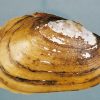


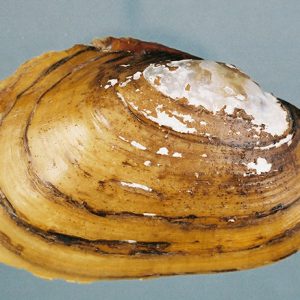
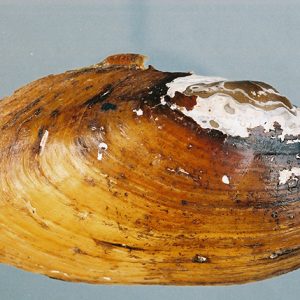
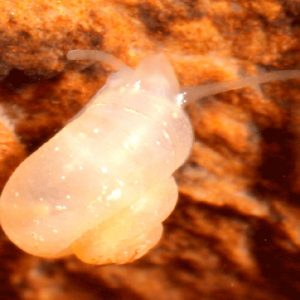
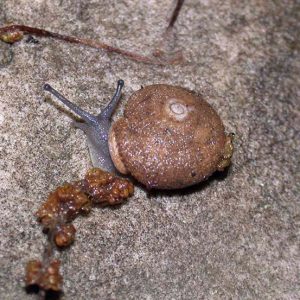

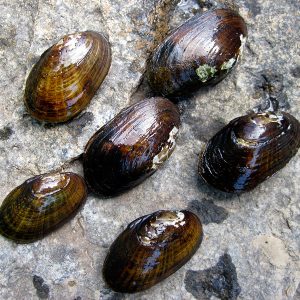




Comments
No comments on this entry yet.